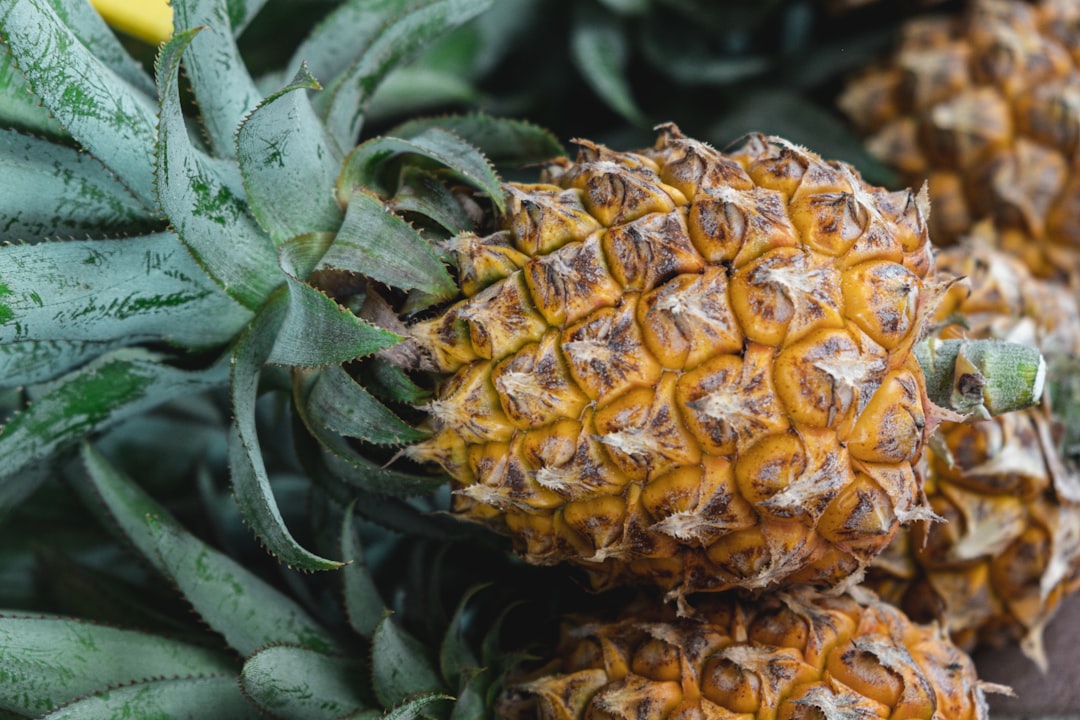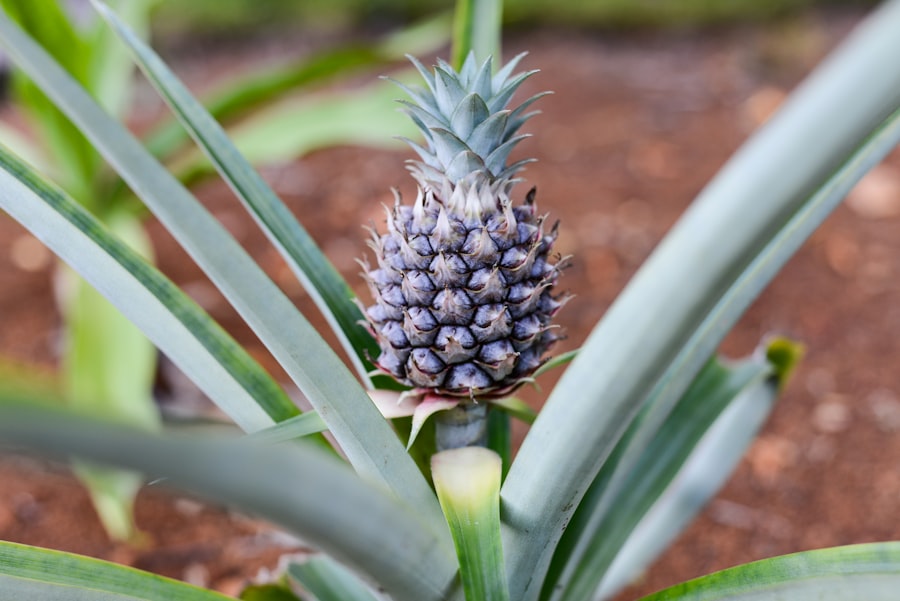Growing Pineapples: Tips for Planting and Cultivating

Pineapples have a long and fascinating history of cultivation. Originating in South America, they were first domesticated by the indigenous people of Paraguay and Brazil. Spanish explorers encountered the fruit in the Caribbean in the late 15th century and brought it back to Europe, where it quickly gained popularity. Pineapples were considered a luxury item due to their rarity and difficulty in cultivation.
Today, growing pineapples at home has become increasingly popular due to their delicious taste and numerous health benefits. Pineapples are rich in vitamins, minerals, and antioxidants, making them a nutritious addition to any diet. Additionally, they are relatively easy to grow and require minimal maintenance, making them an ideal choice for home gardeners.
Understanding Pineapple Planting Basics
Before you start planting pineapples, it’s important to understand the basic requirements for successful cultivation. Pineapples thrive in tropical and subtropical climates, with temperatures between 65°F and 95°F (18°C to 35°C). They prefer well-draining soil with a pH level between 4.5 and 6.5.
When it comes to planting pineapples, you have three options: crowns, slips, or suckers. Crowns are the leafy tops of mature pineapples that can be planted directly into the soil. Slips are small shoots that grow from the base of the fruit, while suckers are shoots that grow from the base of the plant itself. Both slips and suckers can be detached from the parent plant and planted separately.
The ideal time to plant pineapples is during the warmest months of the year when temperatures are consistently above 60°F (15°C). This ensures that the plant has enough warmth and sunlight to grow properly.
Choosing the Right Pineapple Variety for Your Climate
There are several popular pineapple varieties to choose from, each with its own unique characteristics. The most common variety is the Smooth Cayenne, which is known for its large size and sweet, juicy flesh. Other popular varieties include the Queen, which has a golden-yellow color and a slightly tangy flavor, and the Red Spanish, which has a reddish-brown skin and a sweet, aromatic taste.
When choosing a pineapple variety, it’s important to consider your climate. Some varieties are more tolerant of cold temperatures, while others thrive in hot and humid conditions. It’s also important to consider the size of the fruit and the flavor profile that you prefer.
Preparing the Soil for Pineapple Planting
| Soil Preparation Metric | Measurement |
|---|---|
| Soil pH | 4.5-5.5 |
| Soil Type | Sandy loam |
| Organic Matter Content | 2-4% |
| Nitrogen Content | 0.2-0.3% |
| Phosphorus Content | 0.1-0.2% |
| Potassium Content | 0.6-0.8% |
| Soil Moisture | 70-80% |
Before planting pineapples, it’s important to prepare the soil properly. Start by testing the soil to determine its pH level and nutrient content. This will help you determine if any amendments or fertilizers are needed.
If the soil is too acidic, you can add lime or dolomite to raise the pH level. If it’s too alkaline, you can add sulfur or peat moss to lower the pH level. Additionally, adding organic matter such as compost or well-rotted manure can improve soil fertility and drainage.
Pineapples require well-draining soil, so it’s important to ensure that the planting site has good drainage. If the soil is heavy or compacted, you can improve drainage by adding sand or perlite. Aeration is also important for healthy root growth, so make sure to loosen the soil before planting.
Planting Pineapple Crowns: Step-by-Step Guide
Planting pineapple crowns is relatively simple and can be done in a few easy steps. Start by preparing the planting site by removing any weeds or grasses. Dig a hole that is slightly larger than the size of the crown and fill it with well-draining soil.
Next, remove any lower leaves from the crown, leaving only a few at the top. This will help the plant establish roots more quickly. Place the crown in the hole and gently press the soil around it, making sure that it is secure.
After planting, mulch the area around the crown to help retain moisture and suppress weed growth. Water the plant thoroughly, making sure that the soil is evenly moist. Pineapples require regular watering, especially during dry periods.
Watering and Fertilizing Pineapple Plants

Proper watering and fertilizing are essential for healthy pineapple plants. Pineapples require regular watering, especially during dry periods. The soil should be kept evenly moist, but not waterlogged. Overwatering can lead to root rot, while underwatering can cause the plant to wilt and die.
When it comes to fertilizing pineapples, it’s important to provide them with a balanced fertilizer that is high in potassium. This will help promote fruit development and overall plant health. Fertilize the plants every 2-3 months during the growing season, following the instructions on the fertilizer package.
It’s important to monitor your plants for signs of over or under watering and fertilizing. Overwatered plants may have yellowing leaves and root rot, while underwatered plants may have wilted leaves and stunted growth. Overfertilized plants may have burned or yellowing leaves, while underfertilized plants may have pale or stunted growth.
Managing Pests and Diseases in Pineapple Cultivation
Pineapples are relatively resistant to pests and diseases, but they can still be affected by a few common issues. The most common pests that affect pineapples include mealybugs, aphids, and scale insects. These pests can be controlled by regularly inspecting your plants and removing any infested leaves or insects.
In terms of diseases, pineapples can be susceptible to fungal infections such as root rot and leaf spot. To prevent these diseases, it’s important to provide good drainage and avoid overwatering. If you notice any signs of disease, such as yellowing leaves or black spots, remove the affected parts of the plant and treat with a fungicide if necessary.
Organic pest and disease management options are also available for those who prefer to avoid chemical treatments. These include using natural predators such as ladybugs or introducing beneficial nematodes to control pests, as well as using organic fungicides made from ingredients such as neem oil or copper sulfate.
Pruning and Training Pineapple Plants
Pruning and training are important for optimal fruit production and plant health. Pruning helps remove dead or diseased leaves, improves air circulation, and promotes the growth of new shoots. Training helps create a more compact and manageable plant structure, making it easier to care for and harvest.
When pruning pineapples, it’s important to remove any dead or yellowing leaves. This will help prevent the spread of disease and improve the overall appearance of the plant. It’s also a good idea to remove any suckers or slips that are growing too close to the main plant, as they can compete for nutrients and water.
Training methods for pineapple plants include staking or tying the leaves together to create a more compact shape. This can be done using soft twine or strips of fabric. Training helps prevent the leaves from sprawling outwards, making it easier to care for and harvest the fruit.
Harvesting Pineapples: When and How to Pick Them
Knowing when to harvest pineapples is crucial for optimal flavor and sweetness. Pineapples are typically ready to harvest when they have reached their full size and have developed a golden color. The skin should be firm but yield slightly when pressed.
To harvest pineapples, use a sharp knife to cut the fruit from the plant, leaving a small portion of the stem attached. Be careful not to damage the crown or any surrounding leaves. After harvesting, remove any excess leaves or thorns from the fruit and wash it thoroughly.
Storing and Using Fresh Pineapples
Fresh pineapples can be stored at room temperature for a few days, but they are best consumed as soon as possible for optimal flavor and freshness. If you need to store them for longer periods, you can refrigerate them in a plastic bag for up to a week.
Pineapples can be used in a variety of recipes, both sweet and savory. They can be eaten fresh, added to fruit salads or smoothies, grilled for a delicious dessert, or used in savory dishes such as stir-fries or salsas. The possibilities are endless!
Propagating Pineapple Plants from Suckers or Slips
Propagating pineapple plants from suckers or slips is a great way to expand your pineapple garden. Suckers and slips are small shoots that grow from the base of the plant and can be detached and planted separately.
To propagate pineapple plants from suckers or slips, start by selecting healthy shoots that are at least 6 inches long. Gently remove them from the parent plant, making sure to keep the roots intact. Plant the shoots in well-draining soil and water them thoroughly.
Care for newly propagated plants is similar to care for mature plants. Make sure to provide them with adequate sunlight, water, and fertilizer. It’s also important to protect them from extreme temperatures and pests.
Growing pineapples at home can be a rewarding and enjoyable experience. With the right knowledge and care, you can enjoy fresh, delicious pineapples right from your own garden. From understanding the basics of pineapple planting to harvesting and using fresh pineapples, there is so much to learn and explore.
So why not give it a try? Start growing pineapples at home and experience the joy of watching your own fruit grow and thrive. With a little patience and dedication, you’ll be enjoying the sweet taste of homegrown pineapples in no time.



